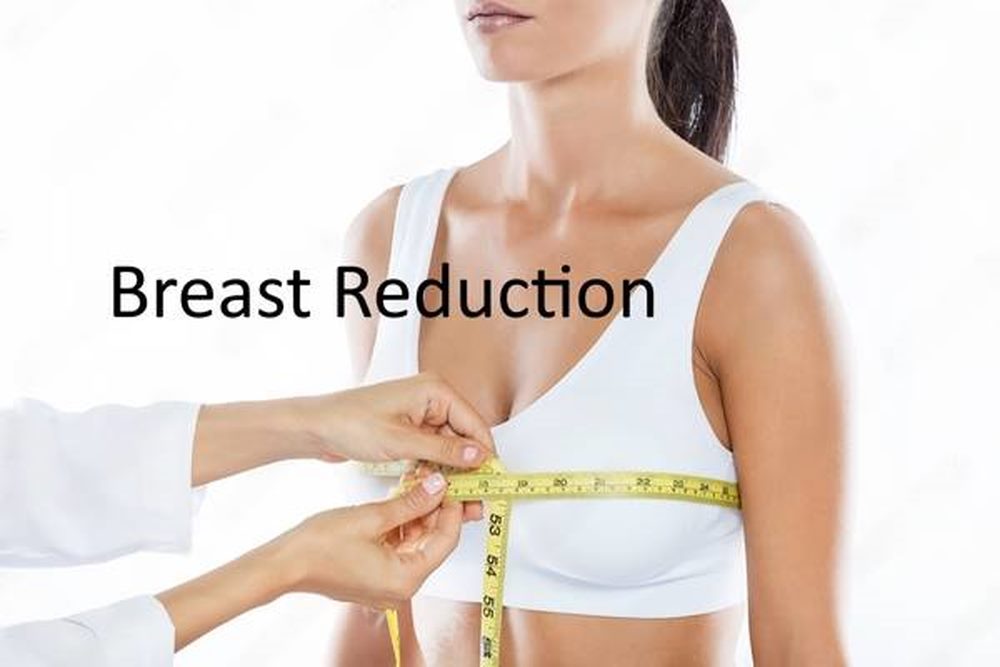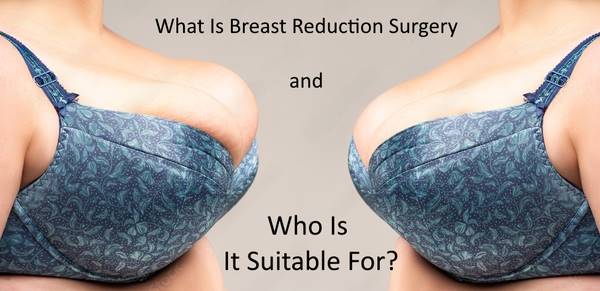Feeling the Burden of Large Breasts? Discover How Breast Reduction Surgery Can Empower You
Living with heavy breasts can be more than just an inconvenience. It can be physically painful, lead to posture issues, and even impact your emotional well-being. If you’re struggling with the limitations and discomforts of a larger chest size, breast reduction surgery may be the life-changing answer you’ve been searching for.
This isn’t just about aesthetics. It’s about reclaiming your freedom and confidence. Conceived:
- Relief from chronic back, neck, and shoulder pain.
- Improved posture and a newfound ease of movement.
- Increased comfort in everyday activities and clothing choices.
- Boosted self-esteem and a renewed sense of empowerment.
But before you embark on this journey, understanding what breast reduction surgery details is crucial. This comprehensive guide will demystify the process, address your concerns, and explore the many ways this transformative procedure can improve your life.
Get ready to learn:
- The benefits and considerations of breast reduction surgery.
- What to expect during the consultation, procedure, and recovery.
- Factors affecting cost and financing options available.
- Real-life experiences and inspiring stories from women who have breast reduction.
No more suffering in silence. Let’s explore how breast reduction surgery can open doors to a lighter, more joyful, and empowered you.
Scroll down, discover the possibilities, and take the first step towards a transformed life.
Carrying the weight of large breasts can be more than just physical. It can impact your posture, your wardrobe choices, and even your confidence. If you’re struggling with discomfort, pain, and limitations due to your chest size, breast reduction surgery (also known as reduction mammoplasty or chest reshaping ) might be the life-changing solution you’ve been searching for.
But before you embark on this journey, let’s break down the common questions and shed light on what this transformative procedure can truly mean for you.
How big do your breasts need to be to get a reduction?
There’s no magic number – every woman’s journey is unique. Size alone isn’t the sole determinant of eligibility for breast reduction surgery. It’s more about the discomfort, limitations, and impact your breasts have on your daily life. Here are some things to consider:
- Physical discomfort: Does back, neck, or shoulder pain significantly affect your life? Do you experience difficulty sleeping, exercising, or finding clothes that fit comfortably?
- Emotional and social limitations: Have large breasts impacted your self-confidence? Do they limit your participation in activities you enjoy or hinder your social interactions?
- Medical considerations: Severe breast asymmetry, nipple discharge, or skin irritation can also be contributing factors.
Ultimately, the decision to undergo breast reduction surgery is a personal one, made in consultation with a qualified plastic surgeon who understands your individual needs and concerns.
How painful is breast reduction?
Pain is subjective, and individual experiences can vary. However, most patients describe the post-operative discomfort as manageable with medication and proper care. Techniques like nerve blocks and ice packs can significantly reduce pain. Your surgeon will create a personalized pain management plan to ensure your comfort throughout the recovery process.
Is it safe to reduce breast size?
Breast reduction surgery is a safe and well-established procedure when performed by a board-certified plastic surgeon in a reputable facility. Like any surgery, it carries certain risks like infection and bleeding, but these are rare and effectively managed with proper techniques and post-operative care. Your surgeon will thoroughly discuss all potential risks and benefits during your consultation, ensuring you make an informed decision.
What happens during a breast reduction?
There are various techniques used in breast reduction surgery, tailored to your unique anatomy and desired outcome. Generally, the procedure involves removing excess breast tissue, fat, and skin, and repositioning the nipple and areola. Here’s a simplified overview:
- Anesthesia: You will be under general anesthesia throughout the procedure.
- Incisions: The surgeon will make strategic incisions around the areola and sometimes across the crease below the breast.
- Tissue removal: Excess tissue and fat are carefully removed, ensuring a natural-looking shape and size.
- Reshaping and repositioning: The remaining tissue is reshaped and the nipple and areola are repositioned to harmonize with your new breast profile.
- Closure: The incisions are carefully closed and sutured.
The entire procedure typically takes 2-4 hours, depending on the complexity of the technique and the amount of tissue removed.
How many sizes can you lose with a breast reduction?
The size reduction varies depending on your anatomy and goals. Typically, patients experience a reduction of one to three bra sizes, but achieving a specific bra size is not the primary goal. The focus is on creating a proportionate and comfortable breast shape that alleviates your physical and emotional burdens.
Can you go braless after breast reduction?
Many women who undergo breast reduction surgery find that they can go braless for short periods, especially after the initial healing period. However, it’s important to note that your breasts will continue to settle and lose some volume over time. For long-term support and optimal shape, wearing a proper post-surgical bra or a well-fitting supportive bra is recommended.
Ultimately, breast reduction surgery is a deeply personal decision that can transform your life in countless ways. If you’re struggling with the limitations and discomfort of large breasts, remember – you’re not alone. Exploring this option with a qualified plastic surgeon can open doors to a lighter, more empowered, and joyful you.
Remember, it’s crucial to do your research and consult with a trusted healthcare professional to determine if breast reduction surgery is the right choice for you. This article is intended to provide general information and should not be considered medical advice.
applicants for breast aid
• Ladies that experience pendulous breasts (regularly indicates extra glandular tissue than fats)
• Who’s skinny (skinny ladies tend to have extra glandular tissue than fats)
• That experience excessively massive breasts (liposuction most often best supplies a 30-50% aid in measurement)
• Ladies that experience excessively dense breast tissue (regularly indicates extra glandular tissue than fats)
• Earlier than menopause (right through menopause fats replace glandular tissue)
Breast Reduction: Preliminary Session
On the preliminary seek advice, your physician will most likely ask you to explain intimately what you prefer to progress. Be particular about what you prefer to complete. In case your surgeon understands your expectancies, she’ll have the ability to decide whether or not your targets are real-looking.
Your surgeon will read about your breasts. She communicates to you concerning the measurement you wish to have your breasts to be and can display to you the place she intends to place the nipple and areola.
You might be at larger possibility for headaches when you’ve got diabetes, deficient circulation, center, lung or liver illness, smoke, have a circle of relatives historical past of blood clots, take sure drugs, and many others. You will want to speak about your scientific historical past completely together with your doctor earlier than you select to go through a surgical operation.
For the reason that measurement, form, and quantity of tissue within the breast will be exchanged after aid, most ladies are suggested to have a preoperative mammogram and a postoperative mammogram six months to 12 months after surgical operation for comparability.
Breast Reduction Surgery: Process/Tactics
Anesthesia: Normal
Location: Health center
Surgical treatment time: 3-4 hours
A mammoplasty is a surgical process that reduces, lifts, and reshapes the breasts. It may additionally scale back the dimensions of the areola (the darkish pores and skin surrounding the nipple).
Many ladies search for breast aids to relieve painful discomfort and different prerequisites (aches, shoulder drive, rashes, pores and skin tags, and many others.) in addition to to make stronger the illusion of their breasts stronger.
The process is most often carried out below normal anesthesia. The operation takes about 3-4 hours, and you’ll require a single day keep or be allowed to head house the day of the surgical operation.
Right through mammoplasty, the surgeon makes an incision which is most often in a keyhole trend: a circle across the aerola and two incisions down the breast which will likely be closed to shape one line.
Fats and further tissue are got rid of. The surgeon then repositions the nipple and areola to the next place and eliminates extra pores and skin from underneath the breast.
Reshaping the Breast: Skin, Stitches, and Scarring
During a mastectomy, surgeons remove specific areas identified beforehand. This removal typically includes skin, breast tissue, and fat. They then reposition the areola and nipple.
The arrows illustrate how the surgeon guides excess skin from above the nipple downwards, suturing it to reshape the breast. After surgical operation, scars will appear across the areola and within the crease below the breast.

In certain situations, surgeons will carefully transfer the nipple and areola as skin grafts to their new position. This is crucial because the nipple sensation is almost entirely lost during the process.
Drains are then positioned at the aspects of the breasts to empty blood and extra fluid. The drains aren’t got rid of for 1-2 days. The incisions are then sutured closed and taped.
Breast Reduction Surgery: Scarless Relief
Liposuction reduces the breasts by getting rid of extra fats. If there may be sufficient elasticity within the pores and skin, it’ll retract and convey a visual breast raise. Benefits of breast aid through liposuction over conventional strategies:
• Much less trauma to the breast
• Quicker restoration
• Much less visual scars
• Fewer postoperative headaches
The most efficient applicants for breast aid through liposuction have breasts that include a big percentage of fats. In case your breasts have extra glandular tissue than fats, a mammoplasty is also extra suitable. A mammogram can also determine the percentage of fat within the breast.
Applicants for Scarless Breast Relief
Varieties of ladies much more likely to have extra fats than glandular tissue of their breasts:
• Ladies that would not have pendulous breasts (regularly indicates extra glandular tissue than fats)
• Who aren’t skinny (skinny ladies tend to have extra glandular tissue than fats)
• That would not have excessively massive breasts (liposuction most often supplies a 30-50% aid in measurement)
• Who would not have excessively dense breast tissue (regularly indicates extra glandular tissue than fats)
• After menopause (right through menopause fats replace glandular tissue)
Breast aid through liposuction will produce a smaller model of the breasts {that a} lady had earlier than liposuction. The breast’s total form will likely be similar to its form earlier than liposuction.
Targeted liposuction safely removes unwanted fat from the breast while protecting the vital glandular tissue needed for milk production, allowing most women to continue breastfeeding without issue.
There’s so little trauma to the breast tissue that mammograms most often seem standard after liposuction of the feminine breast. By contrast, after a mammoplasty, mammograms would possibly display calcification and different adjustments in look.
After liposuction of the feminine breast, there’s a sluggish lower in postoperative swelling over the following 2-4 months. There is also brief lumpiness for several weeks after the surgical operation. This isn’t visual and is a part of the therapeutic process.
Breast Reduction Surgery: Restoration
Ache Stage: Reasonable to serious discomfort. 1-2 weeks of ache drugs
Sutures: Got rid of after 1 week
Drains: Got rid of after 1-2 days
Swelling and Bruising: 2-3 weeks
Numbness: 1-2 weeks.
Paintings: 2 weeks. In case your activity is strenuous or calls for lifting, you may need to wait longer.
Workout: Wait 3-4 weeks
Ultimate consequence: 6 months
On the day of the surgical operation, your chest is also painful, bruised, and swollen and you’ll feel nauseated. The doctor will likely prescribe painkillers for you at your convenience.





